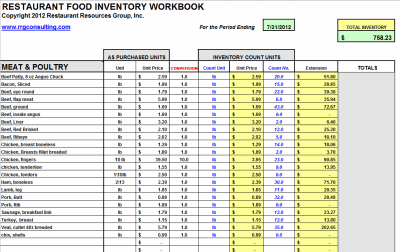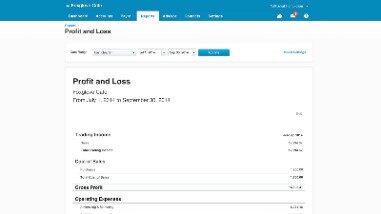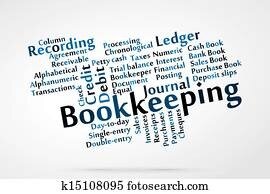
The main advantage of the units of production depreciation method is that it gives you a highly accurate picture of your depreciation cost based on actual numbers, depending on your tracking method. Its main disadvantage is that it is difficult to apply to many real-life situations, as it is not always easy to estimate how many units an asset can produce before it reaches the end of its useful life. SYD suits businesses that want to recover more value upfront, but with more even distribution than they would otherwise get using the double-declining method. The SYD method’s main advantage is that the accelerated depreciation reduces taxable income and taxes owed during the early years of the asset’s life. The main drawback of SYD is that it is markedly more complex to calculate than the other methods. There are multiple classes of assets, including commodities and property.
- Double-declining considers time by determining the percentage of depreciation expense that would exist under straight-line depreciation.
- Depreciation is a process of deducting the cost of an asset over its useful life.[3] Assets are sorted into different classes and each has its own useful life.
- Subsequent results will vary as the number of units actually produced varies.
- For example, let’s say the assessed real estate tax value for your property is $100,000.
The result, not surprisingly, will equal the total depreciation per year again. Regardless of the depreciation method used, the total amount of depreciation expense over the useful life of an asset cannot exceed the asset’s depreciable cost (asset’s cost minus its estimated salvage value). Depreciation is necessary for measuring a company’s net income in each accounting period.
We believe everyone should be able to make financial decisions with confidence. Depreciation schedules can range from simple straight-line to accelerated or per-unit measures.
Using these variables, the accountant calculates depreciation expense as the difference between the asset’s cost and its salvage value, divided by its useful life. This method requires an estimate of the total units an asset will produce over its useful life. Depreciation expense is then calculated per year based on the number of units produced.
Create a Free Account and Ask Any Financial Question
As assets like machines are used, they experience wear and tear and decline in value over their useful lives. Instead of realizing the entire cost of an asset in year one, companies can use depreciation to spread out the cost and match depreciation expenses to related revenues in the same reporting period. This allows a company to write off an asset’s value over a period of time, notably its useful life. Under this method of depreciation calculation, the rate of return of the asset is determined just like an investment. This method is generally used to determine the value of assets with large purchase value, long life, and a fixed rate of return. It demands the internal RoR on cash inflows and outflows of the asset.
See Form 10-K that was filed with the SEC to determine which depreciation method McDonald’s Corporation used for its long-term assets in 2017. Any mischaracterization of asset usage is not proper GAAP and is not proper accrual accounting. Notice that in year four, the remaining book value of $12,528 was not multiplied by 40%. Since the asset has been depreciated to its salvage value at the end of year four, no depreciation can be taken in year five.

Costs outside of the purchase price may include shipping, taxes, installation, and modifications to the asset. A completely depreciated asset’s accounting is to continue reporting its cost and accrued depreciation on the balance sheet. There is no need for additional accounting until the asset is dispositioned, such as by selling or scrapping it.
Methods for depreciation
Accumulated depreciation is used to calculate an asset’s net book value, which is the value of an asset carried on the balance sheet. The formula for net book value is cost an asset minus accumulated depreciation. Amortization is an accounting term that essentially depreciates intangible assets such as intellectual property or loan interest over time. The sum-of-the-years’ digits (SYD) method also allows for accelerated depreciation. For example, an asset with a useful life of five years would have a reciprocal value of 1/5, or 20%.

If a company decides to take bonus depreciation, it must be during the first year of the asset’s life, or they can choose to use one of the depreciation methods above. Another accelerated depreciation method, SYD results in larger depreciation amounts early in the life of an asset, but not as aggressively as declining balance. This method is geared towards assets that lose value quickly or produce at a higher capacity during the early years. This method is best suited for companies that have assets that lose value faster in the early years. Technology (such as computers and cell phones) is an example of an asset that becomes obsolete quickly.
Straight Line Method
They will walk you through the differences and suggest which method(s) you should choose. These assets are not depreciable as it is assumed they will turn into cash in a short amount of time, usually within 1 year. Each method calculates the rate of depreciation differently and some are better fits for different types of companies.
Accounting records that do not include adjusting entries for depreciation expense overstate assets and net income and understate expenses. Nevertheless, most accountants consider depreciation to be a distinct type of adjustment because of the special account structure used to report depreciation expense on the balance sheet. The Tax Cuts and Jobs Act (TCJA) raised the bonus depreciation deduction from 50% to 100%. It allows companies to deduct a large portion of the purchase price of the asset during the first year it is in service, instead of spreading the deductions out over the asset’s useful life like the methods above.
- Unit of production method needs the number of units used during production.
- Its main disadvantage is that it is difficult to apply to many real-life situations, as it is not always easy to estimate how many units an asset can produce before it reaches the end of its useful life.
- Revenue availability is an important consideration to ensure that depreciation is charged when current revenues exceed current operating costs exclusive of depreciation.
- After three years, Accumulated Depreciation – Truck will have a credit balance of $30,000.
Harold Averkamp (CPA, MBA) has worked as a university accounting instructor, accountant, and consultant for more than 25 years. Since the balance is closed at the end of each accounting year, the account Depreciation Expense will begin the next accounting year with a balance of $0. This entry indicates that the account Depreciation Expense is being debited for $10,000 and the account Accumulated Depreciation is being credited for $10,000. Mail us on h[email protected], to get more information about given services. A financial professional will offer guidance based on the information provided and offer a no-obligation call to better understand your situation.
Example of Depreciation
The annual depreciation using the straight-line method is calculated by dividing the depreciable amount by the total number of years. There are several methods that accountants commonly use to depreciate capital assets and other revenue-generating assets. These are straight-line, declining balance, double-declining balance, sum-of-the-years’ digits, and unit of production. As noted above, businesses can take advantage of depreciation for both tax and accounting purposes. This means they can take a tax deduction for the cost of the asset, reducing taxable income.
Depreciation accounting is essential as it helps in providing an accurate picture of the organization’s profitability. Depreciation helps ascertain how much value assets have lost over the years. If we don’t factor it into the revenue of the Company, it could mean that costs are being underestimated.
Are there other methods to calculate depreciation?
For example, if we buy a delivery truck to use for the next five years, we would allocate the cost and record depreciation expense across the entire five-year period. Since the original cost of a long‐lived asset should always be readily identifiable, a different type of balance‐sheet account, called a contra‐asset account, is used to record depreciation expense. Increases and normal balances appear on the credit side Balance Sheet Definition & Examples Assets = Liabilities + Equity of a contraasset account. The net book value of long‐lived assets is found by subtracting the contra‐asset account’s credit balance from the corresponding asset account’s debit balance. Book value is the portion of the asset’s cost that has not been written off to expense. Some accountants treat depreciation as a special type of prepaid expense because the adjusting entries have the same effect on the accounts.
In accounting, depreciation is referred to as reducing the original cost of a fixed asset in a prescribed manner until the asset’s value becomes nil. For example, if a transport company buys a truck for Rs. 200,000, and its useful life is five years, then the business will depreciate the asset under depreciation expense as Rs. 40,000 each year for 5 years. Some systems specify lives based on classes of property defined by the tax authority.
